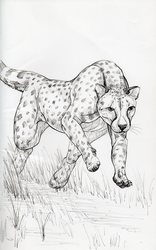Sign In
CloseTotem of the day is Manatee! Slow down your rush and focus your attention on a steady, consistent, and confident progression towards your goal. If you are procrastinating, focus on that goal and gain the same focused progress towards completing it without rushing. This may mean putting others ahead of yourself. Give your love, time, and attention towards others who may need it without giving so much of yourself that you tire yourself out. It will be helpful to add more leafy greens and vegetables to your diet in smaller, more frequent meals rather than three large meals a day. Look forward to receiving and accepting love and attention from others as well. The Manatee totem is known for it's connection to gentleness, steady progress, connecting with emotions/water, trust, and love. When Manatee appears, it can mean that you need to let yourself feel your emotions to work through them to a calm and peaceful place. Take your time step by step rather than rushing. These graceful swimmers were often mistaken as mermaids. They embody the calm, trusting, and peace one can find within themselves.It may be a good time to research water herbs. People of West Africa believed manatees to be sacred and anyone who killed one was a sinner. People who connect with Manatee work best when they have a close friend or family member to rely and connect with. These individuals are open, trusting, and positive creatures that work best in smaller groups with more casual interactions rather than large, formal groups. Although often working slower than others, these souls are known for completing their work and reaching their goals through their own steady pace.
Manatees, Trichechus Manatu, are marine herbivorous mammals that can live up to 40 years in the wild. An adult Manatee can reach up to 13 feet long and weigh over 1,000 lbs. There are three species of Manatee: the West Indian Manatee also known as the American Manatee, the African Manatee, and the Amazonian Manatee. They are named due to the region they live in such as the Amazon Manatee being found along the Amazon River and in waters along Ecuader, Peru, and Colombia. The American, or West Indian, Manatee can be found along eastern and southern United States coastline but have also been known to wander down to the Bahamas. All Manatee species generally live in warmer waters such as rivers, oceans, and seas along the coastline of countries along the Eastern hemisphere and subtropical regions. These graceful mammals are known for their lolling, round shape that also gives them the name Sea Cows. Usually swimming around 5 mph, Manatees can reach up to 15 mphs in bursts of speed when necessary. Their large, broad tails enable them to swim with elegant motions. Manatees are members of the order Sirenia which includes specifically the three species of Manatee and are most closely related to elephants. As times, they are mistaken for dugongs, however dugongs have a forked tail rather than the broad, flat tail possessed by the Manatee. There are two subspecies of Manatee: the Florida Manatee and the Antillean Manatee. The diet of a Manatee consists of vegetation such as freshwater vegetation in rivers or sea grasses out at sea as well as various forms of algae. They graze throughout the day and eat up to a tenth of their own weight in a single day. Manatees are not territorial and have no need to form groups. They often swim alone or in pairs. If they are seen in groups, this is often either for mating or simply gathering in a spot with a large food supply. These groups are called aggregation and generally have no more than six manatees. When they group together for mating, this is generally one female called a cow surrounded by approximately 12 males called bulls. This grouping is called a mating herd. Breeding occurs generally only one every couple of years. After 12 months of gestation, a cow will give birth underwater to a baby called a calf. The first act of living for this calf is to be helped to the surface by their mother for their first breath of air. Within an hour, they are able to swim on their own. It will take 12 to 18 months before the calf is weaned.
Submission Information
- Views:
- 559
- Comments:
- 0
- Favorites:
- 1
- Rating:
- General
- Category:
- Visual / Traditional




